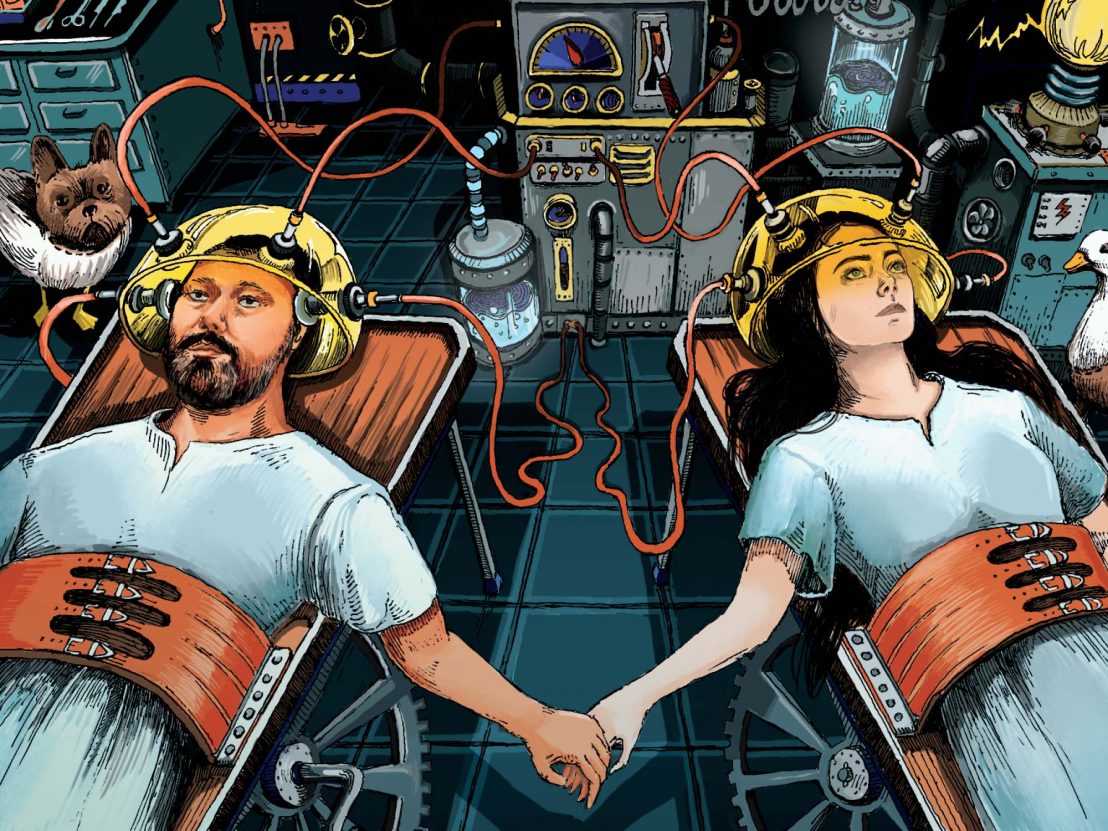
Yorgos Lanthimos on the intricate cine-suture work that it took to make his magnificent new film, Poor Things.
Yorgos Lanthimos’ canonisation as an exciting new voice in modern cinema was almost instantaneous when, back in 2009, his ingenious and provocative third feature, Dogtooth, premiered to slack-jaws at the Cannes Film Festival. With films such as 2011’s Alps and 2015’s The Lobster, Lanthimos offered esoteric but increasingly popular variations on his interest in the more arcane and paradoxical aspects of human psychology.
Surprisingly, for a filmmaker who in no way panders to mainstream convention, he became a household name in 2018 with the scabrous period comedy, The Favourite, on which he developed an important creative partnership with actress Emma Stone. Since shooting his latest film, Poor Things, in 2021, the pair have made two more films together (an experimental short titled Bleat and a forthcoming anthology titled And), but the charmed coming-of-age tale of Bella Baxter, adapted from the classic 1992 novel by Alasdair Gray has been a labour of love – one that began over a decade ago.
LWLies: Alasdair Gray sadly passed away in 2019, but you met him many years before that to discuss Poor Things.
Lanthimos: Yes, it was a long time ago, I think it was 2012 that I met him. When I read the book, I was surprised to see that it hadn’t already been made into a film. I think there were a couple of times that they thought about making it, but it never materialised. So he agreed to meet me and I went up to Glasgow and had a great day with him. I went to his house and he immediately got up, put on a jacket and walked outside, saying, ‘Come, I’ll show you some places.’ We walked fast around Glasgow, and he would say, ‘This is the park, this is that, etcetera.’ He walked me up to the cemetery where he imagined Baxter’s mausoleum would be and through the university. He was very enthusiastic, almost like a child. And he was nearly 80 years old at that point. After, we walked back to his house, and he said, ‘Well, I’ve watched Dogtooth, a friend of mine helped me put the DVD in. I think you’re a very talented young man, and you’re welcome to adapt my novel into a film.’ And that was it. But unfortunately, it took me a while to get there.
The Favourite had been around the industry as a project before you came to it but Poor Things came from you getting Alasdair’s blessing. Did that change the creative partnership between you and [screenwriter] Tony McNamara at all?
For me it’s very hard to find someone to work with, especially when it comes to writing. Trying to find someone to work with on The Favourite was a very long process, and I read so many samples from so many great writers, but to find the exact voice that you think you can actually communicate with, and to build something together, it’s a really tricky thing. But after discovering Tony’s work, it was relatively easy to get going. With The Favourite, we spoke once or twice about what it should be, then he went away and then he brought me a draft – and his first draft was incredible. He got everything that I was talking about, but so much of it is his own voice as well. That’s why I chose him, because I liked his voice and I thought it fit into what I wanted to do. And from then on, he always produces this great first draft that we work on.
We spend time together – having a lot of lunches together because we both love food – talking about it and coming up with different scenes or a structure or storyline or characters and we become specific about it. But there’s already a very strong foundation that he’s put down, that we are then refining for a period of time. It was the same with Poor Things – I guess for The Favourite, we had the real story and some of the original script that Deborah [Davis] had written, and I had worked with her on. But in this case, there was a much stronger foundation in Gray’s novel. We had a lot to draw on, but I think Tony found it a little bit more complicated because there’s a lot in the novel – everything about Scotland, and all these smaller political essays. But we’re working on another adaptation together now, and it’s the same again – we think alike and get along and I like his voice. He always produces a first draft which is great, and then we just build on the details.
You talked about spending some time with Alasdair in Glasgow, and Scotland and its political history is central to the novel. Was it a practical decision to change the main setting to London for the film?
Well, I think Alasdair probably wouldn’t be very happy about that, because he was a very proud Scotsman. But we give [Godwin] Baxter some of his character, and a Scottish accent – Alasdair was also a great inspiration for Willem [Dafoe] as a presence, so we filtered that through him. In the novel, the Scottish issue feels like a different part of the book, and I felt it would just be like trying to make two different films if I tried to put it into this version of the story. Once we decided that the point of view of the film was going to be Bella’s, and it was going to be her story and her journey, and working with an American cast, it just made more sense to contract things.
Mary Shelley’s ‘Frankenstein’ is an obvious parallel for the story, but I’m curious to hear about any other sources of inspiration for you.
We had an incredible art department led by Shona [Heath] and James [Price] that did a lot of work gathering references from so many different places. Paintings and photographs and fashion stuff that either influenced us, or were a modern thing that it made sense to pull back into the older period setting. There were lots of films too. I looked at a lot of Fassbinder with Robbie, in order to show him some of the camera moves and zooms, and then Francis Ford Coppola’s Dracula and how they use the old school techniques in a more contemporary film. There was Roy Andersson too, because he uses so many miniatures, so we would think about how we could make things ourselves, but also how we could use technology. Then there was classic stuff – Powell and Pressburger, of course, and [Federico] Fellini’s And the Ship Sails On, which was a very particular reference for the boat. Even the exterior scene, where Bella comes out to give money to the poor in Alexandria – there’s a very similar shot in Fellini’s film. And I would discuss Buñuel and Belle de Jour with Tony for the scenes in the brothel. [laughs] It’s all over the place.
One crucial aspect of the book is Alasdair Gray’s beautiful illustrations. There’s a moment in the film where Bella curls up on a sofa with Baxter and Max, which felt like a homage to the original illustration for book’s cover.
Yes, you know Shona was the one that reminded me of that. It wasn’t in the script. And she said, ‘I’d love to see that image somewhere in the film.’ It occurred to me when we were shooting towards the end that it would be a beautiful way of seeing them all together.
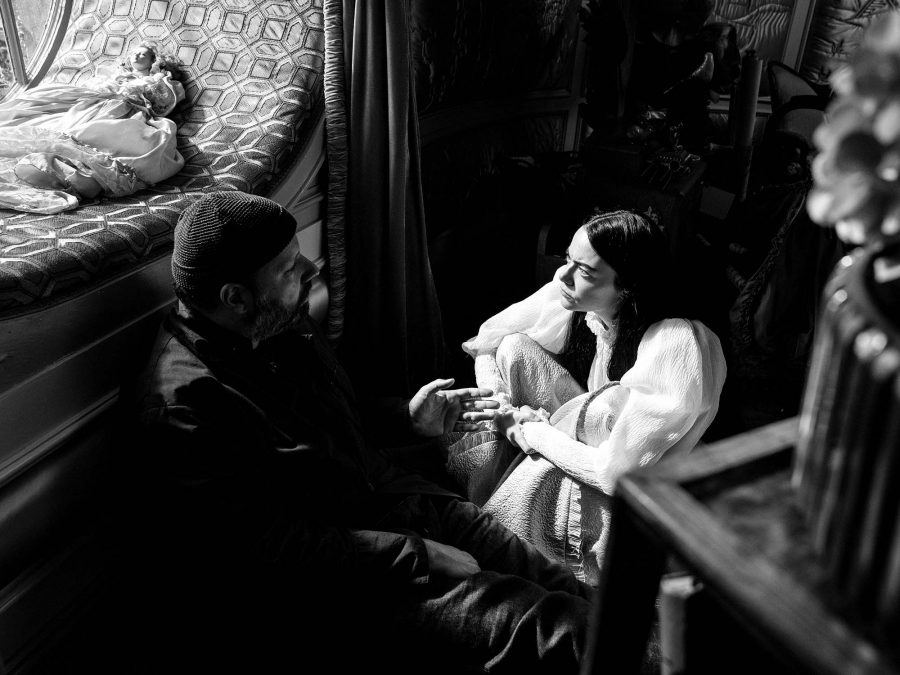
You and Emma have collaborated a number of times now, and she was a producer on Poor Things. What did her involvement mean to you?
Very early on making The Favourite, we realised that we get along really well and we love working together. We trust each other and that was important in this process because it took a long time to get the film made. It was important to have Emma there and to share everything with her. Tony was already involved, and we had started writing the screenplay when I mentioned it to her, but obviously she knew Tony from The Favourite and already loved him, so she read an early draft. Emma’s very precise – usually it’s something minoror very specific that she says works or doesn’t. Other than that, it’s very subtle, but how she receives all the information that I’m giving her – how she reacts – is what I understand. She never tries to impose, but I can tell by how excited she gets about things, or how not so excited she gets, what direction we should take. She’s like a mirror – I’m throwing all this stuff that I’m making, and watching her face. And then going back and reworking.
When you’re creating a film like this, which is essentially the realisation of an entirely original world, that immersion for the cast and crew must be essential. It’s not just a happy accident, it’s the result of a true creative partnership.
Yes. For instance, when I discovered Jerskin [Fendrix], who did the music for the film, I listened to his album, and I sent it to Emma and said, ‘I think this guy, who has nothing to do with film scoring or anything, would do something really incredible.’ And then she listened to it, and she said, ‘Yeah, it’s like this guy just got into your mind and threw everything out in the form of music.’ And that kind of told me, I think this could work.
Another returning figure from The Favourite, besides Emma and Tony is Robbie Ryan, your cinematographer. You have the returning fish-eye lenses.
We went even further on this one. Even rounder!
It reminded me of being a kid, peering into an aquarium. There’s also the transitions from black-and-white to colour in this film. I know you’ve used black-and-white for Bleat now too, but what was the rationale here?
In the beginning, we just wanted some flashback scenes in black-and-white. But then we started testing and we just thought it was so beautiful. I was like, ‘It’s a shame we’re only gonna do these two scenes in black and white,’ and then I started thinking, there’s this whole journey that she takes, so maybe there should be a very clear change, almost like The Wizard of Oz. And there’s an added bonus of when she comes back home, you see that world in colour for the first time. Then we started to experiment with other film stocks – we shot some of the colour stuff in Ektachrome, which is a film that is not very widely used, because it is very difficult to use. We were trying to incorporate these different textures and colours in various parts of the film and have it make sense for the story as well as being interesting to look at.
How has having increased resources influenced your filmmaking?
It makes you want to experiment, and discover things creatively, and visually, and sonically. There’s a feeling that you’re progressing and understanding more about how you use all these tools as a filmmaker. For example, I had a lot of trouble using music in my earlier films, and then I slowly managed to find a way of doing it which wasn’t limiting to me. But also, Poor Things especially needed that sort of world building in various aspects – literally building the sets in the world. And also how you film, and the atmosphere you create.
This is the first time you’ve really used VFX in a film. How much were you able to do in-camera and practically?
We were mostly able to build everything, and we only needed to enhance the world upwards because we built massive sets, but because of the way we filmed with very wide angle lenses and low angles we would always see the ceiling of the studios. We had painted backgrounds, and when we wanted to make things a little more animated, like in the case of the ship we would use an LED screen. Actually, there’s a lot of miniatures in the chapter dividers – the one with the fish is a miniature. A miniature fish, we shrank Emma down. In the wide shots of the ship, that’s a miniature too, and Alfie’s house, when we see Bella arrive, is a miniature. We were very tactile, and wanted to use old school filmmaking techniques, but combine them with new technology.
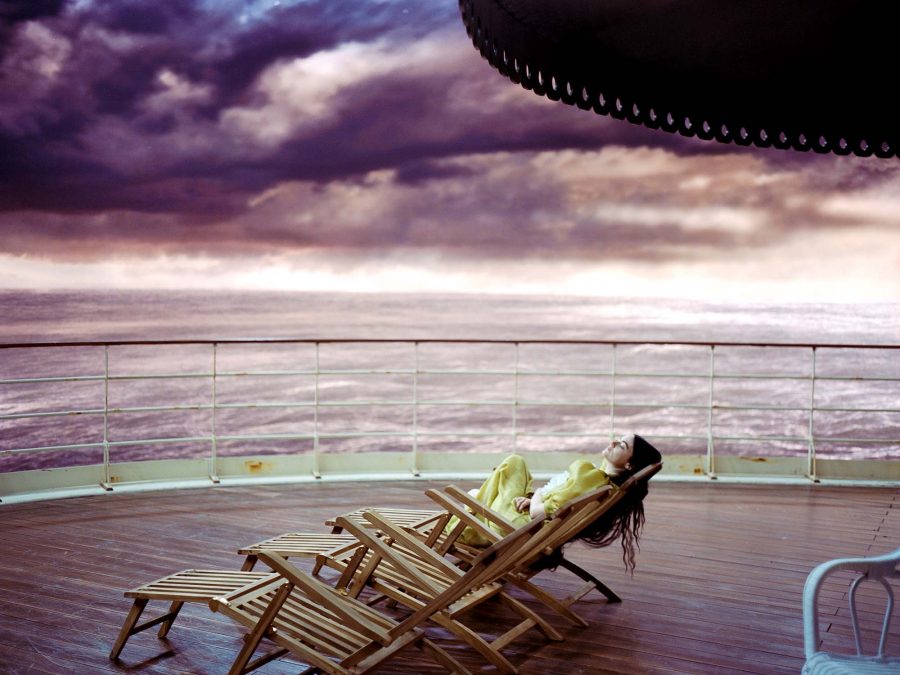
The Favourite and Poor Things deal with themes of social mobilisation and feminism, and women making their way in the world. Do you notice this connective tissue in your work?
You’re probably in a better position to draw those parallels and comparisons as I’m so close to the films, but I guess there’s two things that I always like to try and raise questions about: rules in society, and also human interaction, relationships and behaviour. I create these characters that are asking these questions, and are trying to break free from the confines of societal structures. I was always interested in female characters and their interaction with male characters, but I’m not sure what the reason is… maybe I wasn’t seeing a lot of them. There’s probably personal circumstances in my life as well.
There has been this almost puritanical shift where mainstream audiences are increasingly outraged by sex on screen. Have you noticed this from a filmmaking perspective?
In different places around the world, you get different reactions. With everything by the way, not just sex. But I always find it very strange the conservatism with which sex was viewed in cinema or art in general, when you see how acceptable violence is. Why that is, I have no answer. I always felt that it should be equal. Anything goes in terms of human experience. Why is sex such a taboo? I really don’t understand. So I never thought about it too much. Starting out, I used it the way I thought it was appropriate for each film I made, like any other element in the film. But I do sense this kind of puritanism and conservatism– more so in certain cultures than others – but then every individual has their own moral compass.
You mention changing the perspective of Poor Things to centre Bella – the novel ends with Bella essentially refuting everything that’s happened in Max’s account. Your version ends on a much happier note.
Yes, the found manuscript format and Bella refuting it all works in the novel, but in a film, it just didn’t make much sense. And you know… we all loved Bella so much. It felt like this time, this character deserves a happy ending.
Published 8 Jan 2024
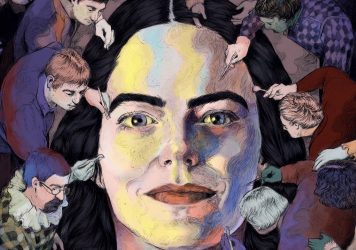
Join us on a jaunt across Europe in the wild and wonderful latest from Yorgos Lanthimos.

Yorgos Lanthimos reunites with his Emma Stone for a lavish and lewd romp through a steampunk vision of Europe.
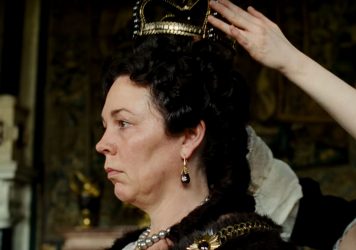
Olivia Colman is sublime as Queen Anne in Yorgos Lanthimos’ absurdist period tragicomedy.